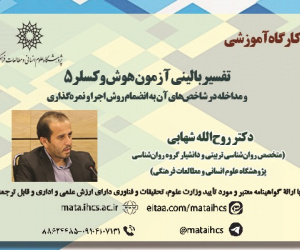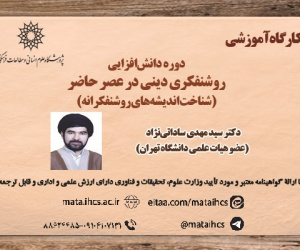تأملی بر نظریه چشمان ناظر خیابان جین جیکوبز و فضاهای امن زنانه با رویکرد آینده نگاری (نمونه: پارک بانوان نرگس تهران) (مقاله علمی وزارت علوم)
درجه علمی: نشریه علمی (وزارت علوم)
آرشیو
چکیده
هدف پژوهش حاضر بررسی نظریه چشمان ناظر خیابان جین جیکوبز و ارتباط آن با فضاهای امن زنانه با نگرشی آینده نگارانه در پارک بانوان نرگس تهران است. پژوهش حاضر از لحاظ هدف کاربردی و با روش توصیفی- تحلیلی با بهره گیری از روش آمیخته (کیفی-کمی) و شیوه آینده نگاری انجام شده است. تجزیه وتحلیل اطلاعات به منظور تدوین سناریوهای اولویت دار با بهره گیری از نرم افزار سناریو ویزارد، سناریوهای سازگار، مشخص سپس سناریوهای آینده مطلوب اولویت بندی، تشریح و تفسیر شده است. جامعه آماری و حجم نمونه تعداد 30 نفر از خبرگان و صاحب نظران حوزه مسائل شهر و مدیریت شهری هستند که با استفاده از ماتریس سناریو ویزارد وزن دهی و نمره گذاری گردیده اند. سناریوهای پژوهش در قالب پرسش نامه عدم قطعیت با شاخص های کالبدی، اجتماعی، زیبایی شناسی، عملکردی و مکان یابی با شاخص های مربوطه توسط خبرگان و صاحب نظران موردبررسی قرار گرفته است. نتایج نشان داد در ابعاد موردبررسی بعد کالبدی شاخص (تأکید بر بلوک های مسکونی کوچک) در سناریو 1 و شاخص (کاهش بزهکاری بالأخص در پارک های پیرامون خانه) در سناریو 2 (سناریوهای مطلوب)؛ در بعد اجتماعی شاخص (نظم فعالیت ها بر نظم بصری) در سناریو 1 و شاخص (تأمین امنیت شبانه) در سناریو 2 (سناریوهای ایستا)؛ در بعد زیبایی شناسی شاخص (حفاظت از زندگی) (سناریوی ایدئال)؛ در بعد عملکردی شاخص (تأکید بر تنوع عملکردی در محلات مسکونی) در سناریو 1 و شاخص (تأکید بر تراکم و تمرکز به عنوان عامل حیات بخش زندگی شهری) در سناریو 2 (سناریوهای مطلوب) و در بعد مکان یابی شاخص (مکان یابی کاربری های سازگار در کنار هم) (سناریوی ایستا)؛ به عنوان تصویری منسجم در سناریوهای باورکردنی طبق خروجی های حاصله از نرم افزار سناریو ویزارد شناسایی شدند.A reflection on Jane Jacobs's Street Watching Theory and women's safe spaces with a futuristic approach (Case: Narges Women's Park, Tehran)
The purpose of this study is to examine Jane Jacobs's street-watching eyes theory and its relationship to women's safe spaces with a futuristic perspective in Tehran's Narges Women's Park. The present study is applied in terms of purpose and was conducted with a descriptive-analytical method using a mixed method (qualitative-quantitative) and a foresight method. Analyzing information with Scenario Wizard software to develop prioritized scenarios, compatible scenarios are identified, and then desirable future scenarios are prioritized, described, and interpreted. The statistical population and sample size are 30 experts and scholars in the field of urban issues and urban management, who have been weighted and scored using the Wizard Scenario Matrix. The research scenarios have been examined by experts and scholars in the form of an uncertainty questionnaire with physical, social, aesthetic, functional, and location-finding indicators. The results showed that in the dimensions under study, the physical dimension index (emphasis on small residential blocks) in scenario 1 and the index (reduction of crime, especially in parks around the house) in scenario 2 (desirable scenarios); in the social dimension index (order of activities over visual order) in scenario 1 and the index (providing night security) in scenario 2 (static scenarios); in the aesthetic dimension index (protection of life) (ideal scenario); in the functional dimension index (emphasis on functional diversity in residential neighborhoods) in scenario 1 and the index (emphasis on density and concentration as a vital factor of urban life) in scenario 2 (desirable scenarios); and in the location dimension index (locating compatible uses together) (static scenario); were the coherent images in plausible scenarios according to the outputs obtained from the Scenario Wizard software.







